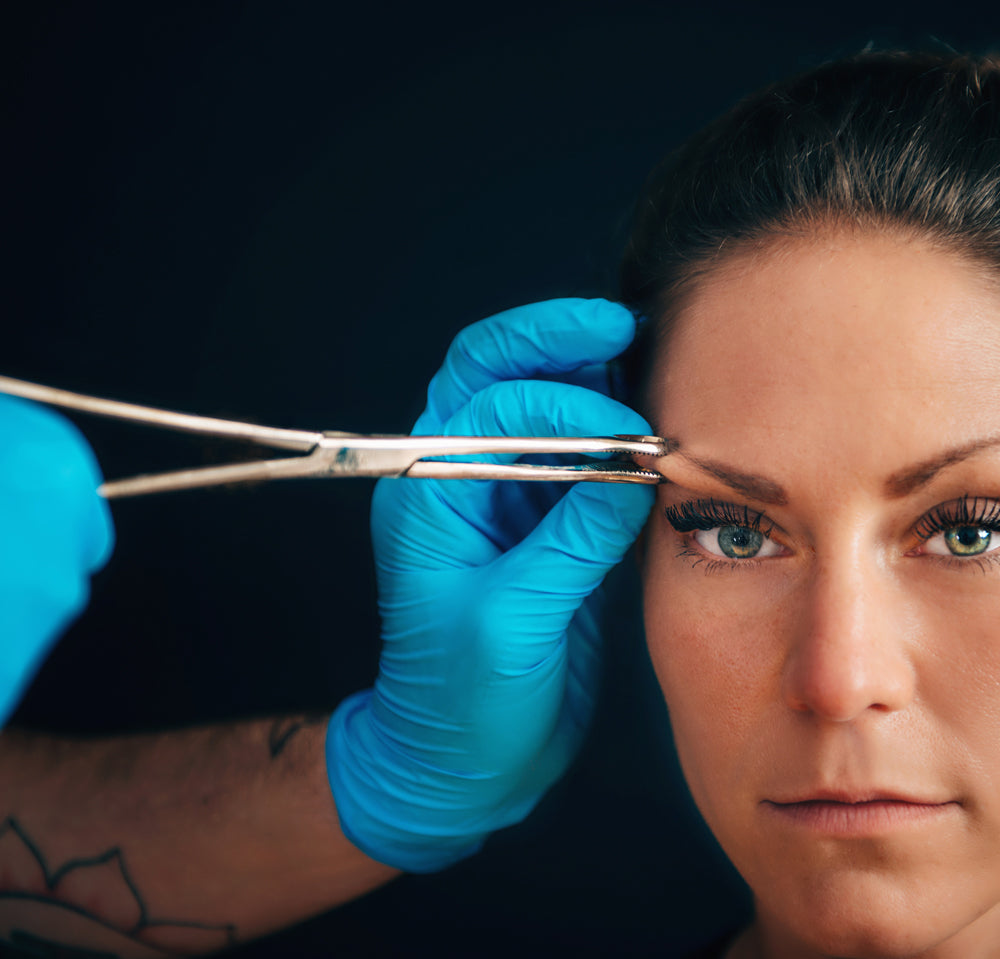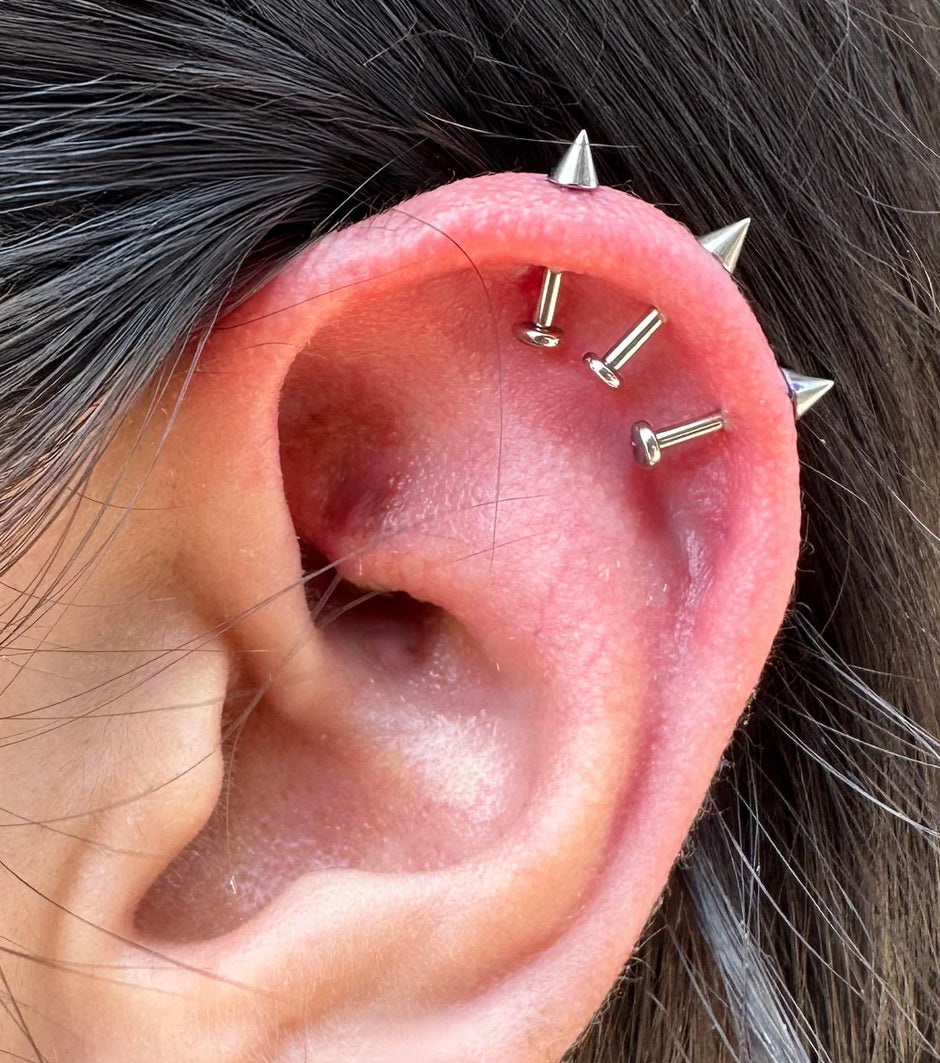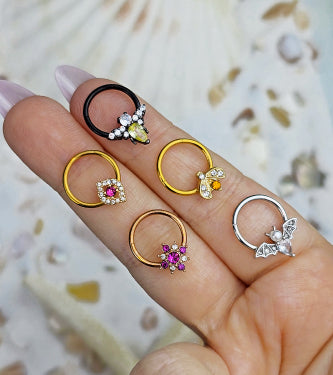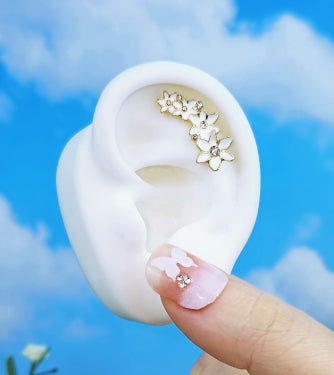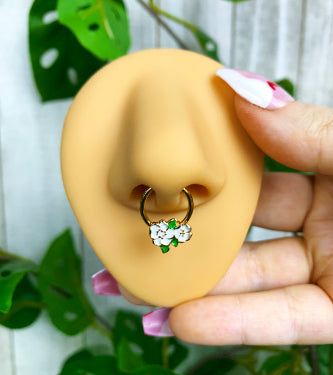If you are unfamiliar with piercings, you may think that a “rook” is either a type of bird or a chess piece. In fact, it is all a piercing located in the ridge of ear cartilage that is directly above the daith. Now that we have our terminology understood, let’s take a brief moment to talk about this subtle-but-stylish cartilage piercing.

Anatomy
The anatomy needed for this piercing is fairly accessible and most people have a substantial enough ridge to properly support a rook piercing. What varies widely is the anatomy that decides what kind of jewelry you can wear in it when it’s healed. If your ear is small or the area around that ridge is shallow you may only be able to wear a curved barbell in your piercing. If your ridge has more of a ledge-like structure or is very prominent, which is rarer, you may be able to rock circular jewelry in your rook like a hinged segment ring or a captive bead ring. You will almost certainly be pierced with a curved barbell to allow for easier healing and to accommodate the swelling afterwards. Don’t despair if you can’t wear circular jewelry and don’t like the look of the jewelry you were pierced with. A curved eyebrow ring of the same gauge will easily double as rook jewelry and can be found in a wide array of finishes and styles.
Healing and Aftercare
The rook piercing is not an easy piercing to heal. It can take as few as 9 or as many as 18 months to fully heal. (Make sure you have a travel pillow to sleep on if you’re a side sleeper!) You won’t be able to change your jewelry (aside from any piercer-recommended downsizing) until it’s fully healed so if you really hate your jewelry just keep reminding yourself that it’s temporary. Aftercare is quite simple, like most ear cartilage piercings. Using clean hands, spray it twice a day with sterile saline wound wash spray that contains only saline and nothing else. Afterwards, rinse with fresh running water and pat it dry with a clean paper towel. Do not put anything else on your healing piercing. Not antibiotic ointment, not sea salt, and certainly not tea tree oil.

Migration and Rejection
Ah, the two most dreaded words for pierced people. Rook piercings can migrate. This is often due to factors like trauma (something hitting it, for example), improper jewelry, or improper aftercare. This results in a piercing that has shifted and is no longer in the same position it was pierced in. Rejection can also occur, as with any other piercing and for the same reasons. Some people may find that their cartilage simply doesn’t heal piercings well. If you see things like your piercing fistula look bigger, the jewelry no longer sits the same way, you can see more of the jewelry or see it through the skin, your skin is red and flaky around the piercing, or your piercing seems irritated and cannot be calmed, these can all be signs of migration or rejection. Once these processes have begun, they cannot be stopped and the only way to fix them is to remove the jewelry and let the piercing heal.
Rook piercings are a nifty addition to any look and can be dressed up or down as you see fit. While the actual piercing and healing process can be prolonged and rather unpleasant at times, this piercing is becoming a classic for good reason. It’s versatile without being terribly prominent and has a ton of style. So, if you’re looking for a new addition to your ear consider rocking the rook! Happy piercing!


